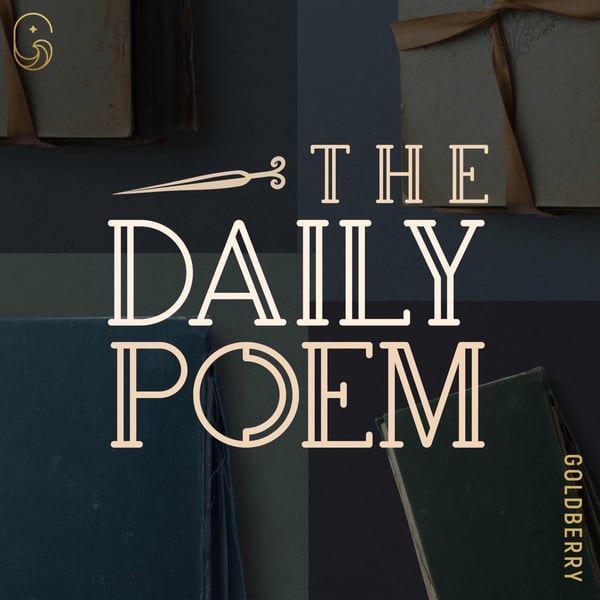Longfellow's "Snowflakes"
The Daily Poem
Goldberry Studios
4.6 • 729 Ratings
🗓️ 25 January 2019
⏱️ 4 minutes
🧾️ Download transcript
Summary
Welcome to The Daily Poem. Today's poem is Longfellow's "Snowflakes".
Remember: Subscribe, rate, review.
Hosted on Acast. See acast.com/privacy for more information.
This is a public episode. If you'd like to discuss this with other subscribers or get access to bonus episodes, visit dailypoempod.substack.com/subscribe
Transcript
Click on a timestamp to play from that location
| 0:00.0 | Hello and welcome to the Daily Poem. I'm Heidi White, filling in for David Kern. Today I'm going to read a lovely little poem by Henry Wadsworth Longfellow called Snowflakes. Out of the bosom of the air, out of the cloud folds of her garments shaken, over the woodlands |
| 0:23.1 | brown and bare, over the harvest fields forsaken, silent and soft and slow, descends the snow. |
| 0:33.0 | Even as our cloudy fancies take suddenly shape in some divine expression, even as the troubled |
| 0:39.6 | heart doth make in the white countenance confession, the troubled sky reveals, the grief it feels. |
| 0:48.1 | This is the poem of the air, slowly in silent syllables recorded, this is the secret of despair, long in its windy bosom hoarded, now whispered and revealed to wood and field. |
| 1:04.7 | I love this poem. There's so much there. It's rich in meaning and informal elements. It's really lovely. |
| 1:13.0 | Henry Wadsworth Longfellow was, of course, extravagantly famous in his own time, and his |
| 1:18.5 | poetry was savored and beloved by his public. And in this poem, you can see why. The formal elements include just this lovely rhythm to it. Longfellow is known, even in his time, for the unusual method of using dactylic meter. Often in his poetry and dactylic, for those of you who need to be reminded of that, |
| 1:44.5 | it means that it has an accent on the first syllable and then two unaccident syllables after that. |
| 1:51.5 | Let's find a line that says that. |
| 1:53.0 | Okay, descends the snow. |
| 1:55.0 | Descends the snow. |
| 1:56.4 | It has a double unstressed syllable after the first one, which for some poetry that can make it sound |
| 2:03.3 | very sing-song and kind of cheesy. But Longfellow, he uses it to kind of create a bit of an |
| 2:12.2 | eerie feeling and kind of throw off the meter while keeping the form. It's really, it's really brilliant what he does with it. |
| 2:18.9 | So there's a regular rhyme, a regular rhythm in this poem. And then this metaphor, this line here, this is the poem of the air. |
| 2:29.0 | That as the snow descends, the order of it and also the chaos of it creates this poetry that's swirling in the air |
| 2:39.5 | that covers and hides the world. This poem has an eerie feeling even as it describes the beauty |
| 2:46.6 | of the snow, the contrast, the paradox of creating beauty out of hiding something and covering it up |
| 2:53.7 | while at the same time reveals a level of beauty within the natural world. So it's an easy |
| 3:03.0 | poem to read with some beautiful imagery in it, but it also has this rich depth of form and meaning. |
| 3:08.3 | So here I'm going to read it again. Snowflakes by Henry Wadsworth Longfellow. |
... |
Please login to see the full transcript.
Disclaimer: The podcast and artwork embedded on this page are from Goldberry Studios, and are the property of its owner and not affiliated with or endorsed by Tapesearch.
Generated transcripts are the property of Goldberry Studios and are distributed freely under the Fair Use doctrine. Transcripts generated by Tapesearch are not guaranteed to be accurate.
Copyright © Tapesearch 2025.

